Art & Exhibitions
Anish Kapoor Opens Up to Us About Racism, Vandalism, and Anti-Semitic Smears
Kapoor talked to us at the opening of his debut Moscow show.
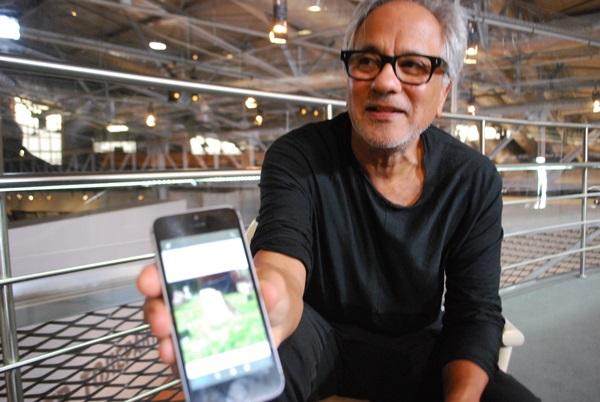
Kapoor talked to us at the opening of his debut Moscow show.

Nadja Sayej

Looking as fit as ever, British sculptor Anish Kapoor gave a lecture in Moscow on September 21, the day of the opening of “My Red Homeland,” an exhibition at the Jewish Museum and Tolerance Center as part of the forthcoming 6th Moscow Biennale of Contemporary Art.
The new show, a stunning first outing for the artist in the city, and in all of Russia, comprises four pieces created from 1993-2007. With gaping wall works, rotating sculptures, and wonky mirrors, this show is billed as Kapoor’s official Russian debut. Yet, judging from the questions posed after the public lecture Kapoor gave on the afternoon of the opening, you may not have known he was in town for a new show.
Muscovites raised their hands to ask about Dirty Corner, Kapoor’s scandalous 10€ million Versailles sculpture, which was defaced twice with anti-Semitic slogans. Kapoor decided to leave the vandalism on his public sculpture. And with the French court’s recent decision to have him cover the graffiti that was scrawled on it, nobody in Moscow yesterday wanted to talk about the show at hand.
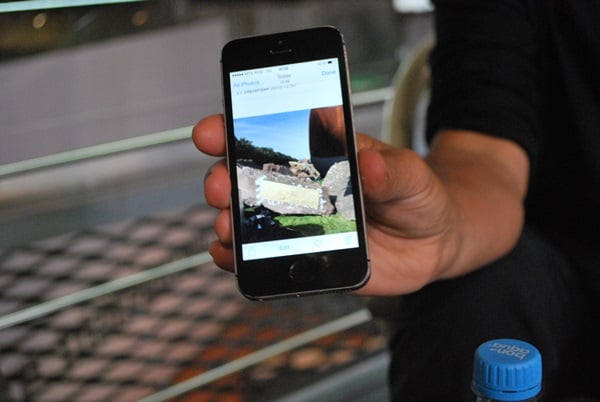
Image: Nadja Sayej.
“We lost, can you believe it?” Kapoor told artnet News after the lecture. “Some very racist, in my view, deputy from parliament took me to court. We were forced to hide the graffiti. It’s a terrible, sad thing.”
“You want me to pretend it didn’t happen?” Kapoor asked. “It happened.” Kapoor has said that the writing was left on the sculpture as a “testament to shame and to horror.”
But not everyone felt as he did. Earlier this month, right wing official Fabien Bouglé filed a complaint against Kapoor for “inciting racial propaganda.” The French court ruled against Kapoor’s favor this past Saturday: He was forced to mask the artwork’s graffiti against his wishes, which he posted on Instagram.
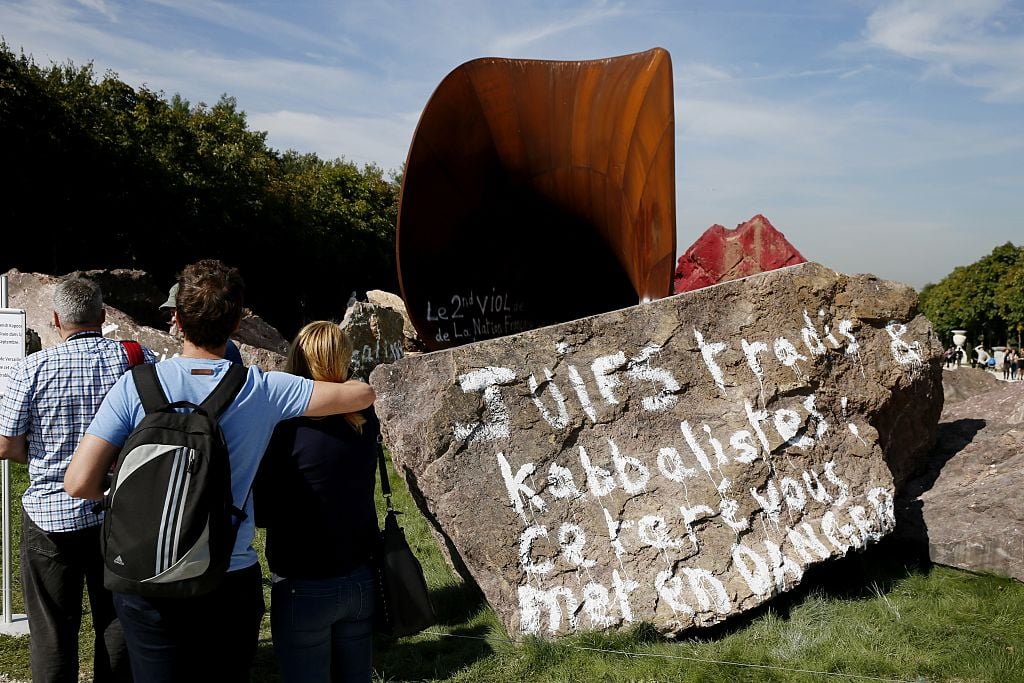
People look at the grafitti inscribed artwork by British-Indian artist Anish Kapoor entitled “Dirty Corner” in the gardens of the Chateau de Versailles in Versailles on September 11, 2015, a day after the artwork was emblazoned with grafitti for a third time. A controversial sculpture by British artist Anish Kapoor on display in the gardens of France’s Palace of Versailles has been vandalised for a third time, with graffiti saying “respect art” scrawled on it, the royal chateau said. AFP PHOTO / PATRICK KOVARIK
–RESTRICTED TO EDITORIAL USE, MANDATORY MENTION OF THE ARTIST UPON PUBLICATION, TO ILLUSTRATE THE EVENT AS SPECIFIED IN THE CAPTION — (Photo credit should read PATRICK KOVARIK/AFP/Getty Images)
The latest news? Kapoor is appealing the French court’s decision. “Absolutely,” he said. “How could we not? Tell me. France has narrow-minded bigots but we’ll win.”
“France is weird, I don’t really understand it,” he continued. “In the sense it’s bigoted and bigotry is supported by the courts, which is bizarre beyond belief, in my mind. It doesn’t take in the full context. We’re going to take the case to appeal and we’ll see what happens.”
Pulling out his iPhone, Kapoor showed us an unpublished photo of a graffiti-covered rock from Versailles. Work had begun that day in Paris to cover the graffiti. Kapoor’s team is laying gold leaf over the rocks but with enough room to show the remnants of the graffiti. “I have a team there now,” he said. “I have to transform it. Unraveling, finding an answer to a crime of hate and turn it into something else.”
“Culture is a victim of vandalism and hate,” said Kapoor, still angry about the court’s decision. “If vandalism and hate stops public experimentation, we all lose.” He continued, “We have to experiment in public, it’s our role as artists, that’s how society grows. If we stop that, we might as well live in a fascist state.”
In Russia, Kapoor isn’t worried about his work being vandalized—he’s smiling. “Showing “Red Homeland” in Russia is just naughty,” he said. “Just a little.”
The centerpiece of the show is a work by the same name, which is made from 20 tons of blood red pigment mixed with Vaseline. Piled into a 12-meter-wide circular platform, the mechanical sculpture has a steel arm, which turns around slowly, clock-like, eroding and reshaping the globular material.
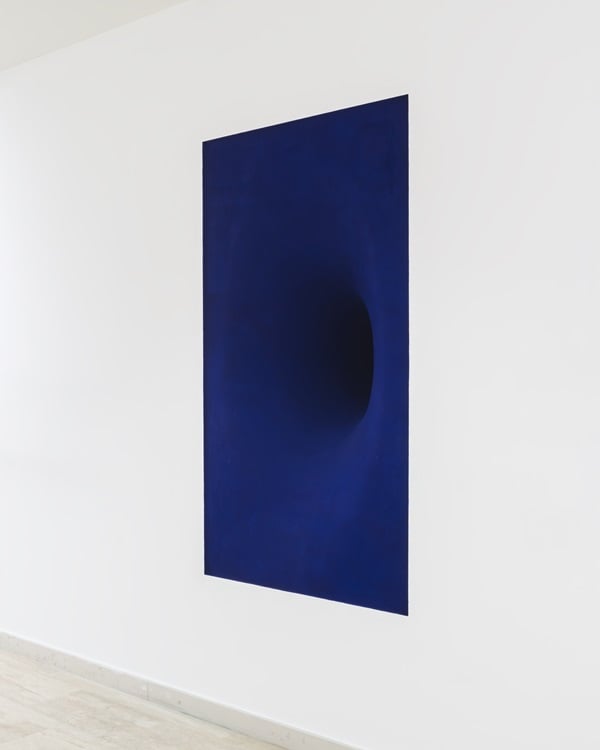
Anish Kapoor, My Body Your Body (1993).
Image: Dave Morgan © Anish Kapoor.
In the large room in which all the show is displayed, there are two wall works Shelter (2007) and My Body Your Body (1993), the latter of which is a gaping hole in the wall, a witty reference to Alice in Wonderland (in fact, it looks a bit like the rabbit hole). The work encourages audience participation (many try to poke the hole to see if it’s real).
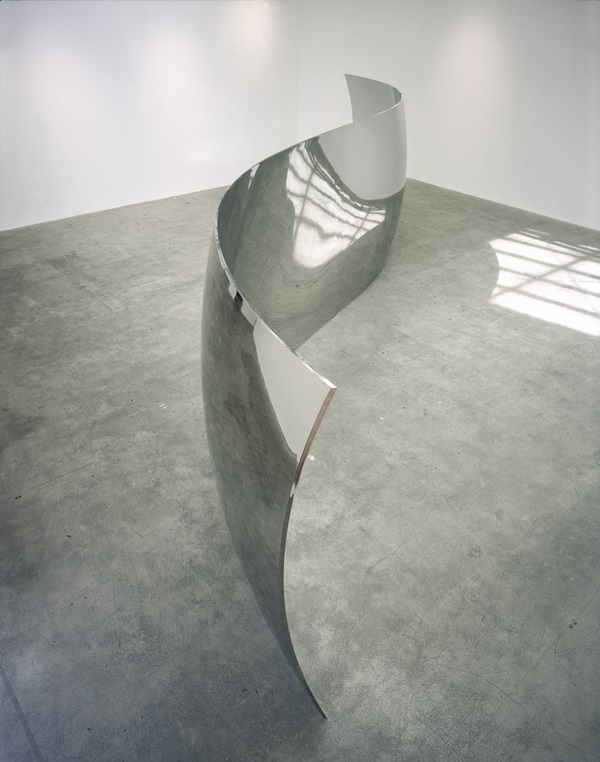
Anish Kapoor, S-Curve (2006).
Image: by Joshua White © Anish Kapoor.
At the center of the room is S-Curve (2006), an irresistibly photographable curved, mirrored wall, which Kapoor calls “a selfie object in the age of the selfie” (he’s also given this moniker to his artwork “Cloud Gate”—the “ultimate selfie”). Much like a fun house mirror, the work alters the human form by its reflection stretching it into thin, abstract shapes.
“It means a lot to be here,” said Kapoor. “Tolerance is an interesting word; I’ve had lots of intolerance lately. I hope these pieces speak in a sparse, clear way.”
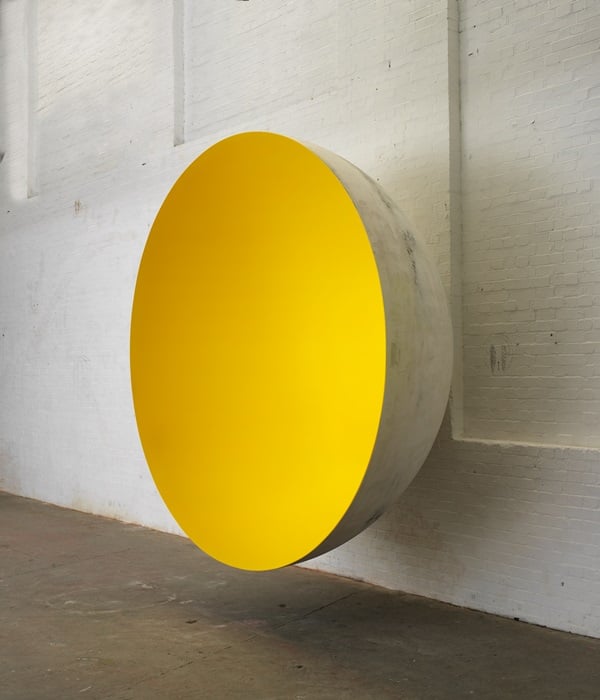
Anish Kapoor, Shelter (2007).
Image: Dave Morgan © Anish Kapoor.
Related stories:
Anish Kapoor Forced by French Court to Remove Anti-Semitic Vandalism from Versailles Sculpture
Anish Kapoor Deeply Saddened by Vandalization of “Vagina Sculpture” at Versailles
Ai Weiwei and Anish Kapoor Joined by Activists in Protest March for Refugees
Anish Kapoor Furious as Chicago Mayor Rahm Emanuel Calls Cloud Gate Plagiarism ‘Flattery’